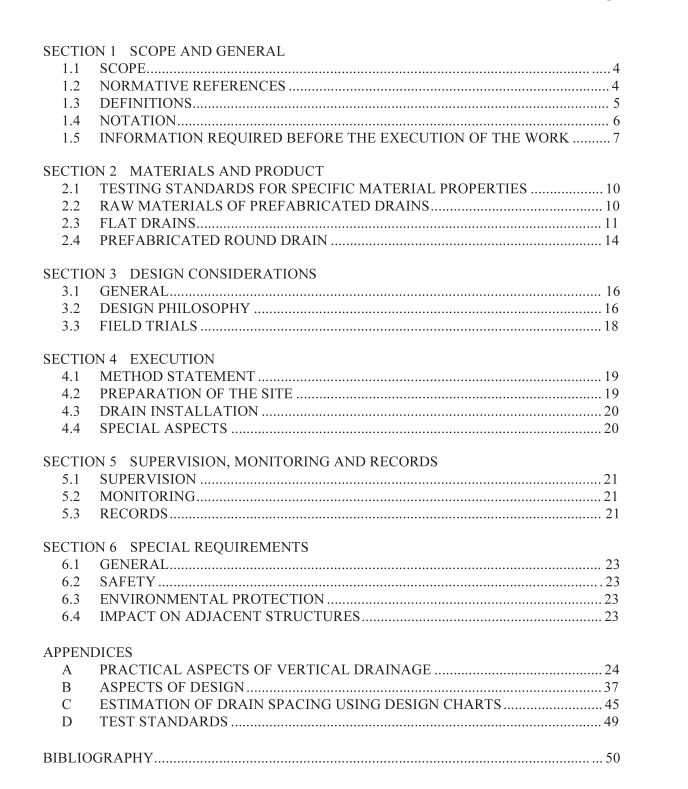AS 8700 pdf download – Execution of prefabricated vertical drains

AS 8700 pdf download – Execution of prefabricated vertical drains
2.3.1 Shape and structure of flat drain
The flat drain is a prefabricated drain with a rectangular cross-section, usually consisting ofa central core with a channel system surrounded by a filter. The width of the core of the flatdrains is typically 100 mm and the thickness is between 2 mm and 5 mm.
The core shall consist of a profiled strip,with or without perforation, or a profiled mat withan open or closed structure. It shall have a structure that provides uniform hydraulic flowcapacity.
Tears and/or other defects shall not be allowed to occur. Visual inspections for damageshall be made regularly as part of the production quality control.
2.3.2 Measurements
The roll length, width and thickness of the core of the flat, at any given place, shall complywith the dimensions given by the manufacturer (within allowable deviations given by themanufacturer) as part of quality control information.
2.3.3 Durability
The drain shall be protected against weathering during storage on the site.
The product shall not be exposed longer than the time nominated by the manufacturerunless the product is protected by a wrapping material or stored in-house. Therecommendations of the supplier shall be followed.
2.3.4 Tensile strength and elongation
The required tensile strength of the flat drain is dependent upon the type of installationmachine,installation technique and depth of the drain. Tensile strength of the flat drains inthe longitudinal direction shall be high enough to prevent breakage during and afterinstallation.
Testing of tensile strength and elongation of the flat drain shall be made in accordance withthe relevant Standards listed in Table 2.1 (modified with regard to the width of the product).NOTE:The following characteristics of a flat drain are recommended:
(a) Elongation ≥2% at failure of the weakest element.
(b)Elongation ≤10% at a tensile force of 0.5 kN(20% if exposed to frost).
(c)Minimum tensile strength of 7 kN/m at failure of the complete drain, modified with regard to the actual width of the product test specimen.
The strength of the seam,measured according to the relevant Standards in Table 2.1 in arange of temperatures that apply to the project site, shall be at least 1 kN/m.
The grab tensile strength shall be greater than 1.6 kN for the composite drain and 0.3 kN forthe filter.
2.3.5 Discharge capacity
The discharge capacity and the filtration characteristics are the most important properties.The following factors influence the discharge capacity:
(a) Due to increasing lateral effective pressure during the consolidation process, the filter is squeezed into the channel system of the core, which reduces the channel area.
(b)The vertical compression of the soil that takes place during the consolidation process may lead to buckling of the relatively incompressible flat drains,which may reducethe discharge capacity.
The required discharge capacity of the flat drain is largely dependent upon the purpose of ground improvement, the consolidation parameters of the soil, the drain spacing and the depth of drain installation (see Note 1).
The discharge capacity shall be high enough to satisfy the design requirements (see Note 2). The discharge capacity test shall be carried out in accordance with the relevant Standards listed in Table 2.1 and with the appropriate modifications (see Note 3).
For usual applications, the discharge capacity test shall be performed at the laboratory temperature and then the test report shall be referred to a temperature of 20°C. For applications in tropical environment, the discharge capacity test shall be performed at a temperature corresponding to the soil temperature at the place of drain installation and then the test report shall be referred to that specific temperature. The test period shall be long enough to yield a constant value of discharge capacity; preferably at least two days at the maximum static pressure stipulated by the designer.









